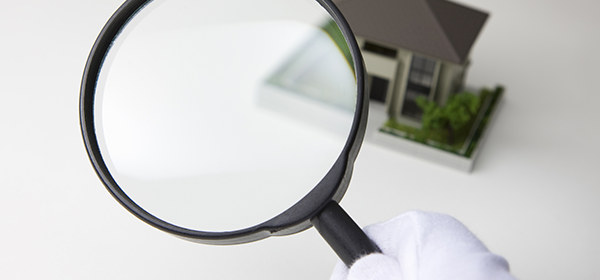To aspiring loss adjusters
Loss adjusters are professionals in calculating loss amounts and insurable value who perform fair, impartial adjustment work.
Do you know what a Registered Loss Adjuster (“adjuster”, or “kanteinin” in Japanese) is? In recent years the word “kantei” (“adjustment” or “assessment”) has become famous due to a well-known television program, but does the word “kantei” mean the same thing in this case? In the field of antiques, “kantei” refers to determining if an object is authentic or not. In contrast, an adjuster calculates the insurable value and amount of loss related to damage insurance, and also calculates the insurance payout amount for the insurance policyholder. This work is not limited to calculating amounts of money; adjusters also provide various types of support so that insurance payouts are made in a suitable and prompt manner.
Adjusters are always active after disasters that involve damage insurance contracts. Many adjusters spent long amounts of time onsite after the Great Hanshin Earthquake and Great East Japan Earthquake. They head to the site of the disaster, obtain the information necessary for calculating insurance payouts, perform investigations, and provide this information to the damage insurance company.
Next, we will introduce the roles of adjusters and what skills they require.

Roles played by adjusters

Suitably calculating insurance payouts
Based on a request from an insurance company after the occurrence of loss, the adjuster investigates and suitably calculates the amount of loss. He or she also lends support so the insurance company can promptly provide the insurance payout to the policyholder. This is called “loss adjustment.”

Calculating the suitable insurable value
When an insurance company concludes an insurance contract, an adjuster appraises the insured items ahead of time and promptly calculates the insurable value (the value of the items) and insurance payout. This is called “assessment.”

Performs neutral, fair, and impartial work
Adjusters embark on investigations according to requests from insurance companies. The job of the adjuster is to discern and calculate the value of a given item—from a neutral standpoint—for loss adjustment and assessment alike, and even if the adjuster has received requests from the insurance company or policyholder. These results are connected to fair, impartial work.
Skills required by adjusters
Profound understanding of insurance agreements
For loss adjustment, the adjuster must look at the insurance agreement to confirm whether a suitable insurance payout is being made according to the insurance. However, there are various types of insurance offered by different insurance companies, as well as a wide range of loss types. Therefore, the adjuster must confirm the circumstances for each loss. For that reason, he or she requires a profound understanding of these agreements at all times, and must be able to clearly understand to what extent they apply.
Preparing drawings and making minute calculations
During onsite investigations, an adjuster must prepare drawings (ground plans, elevations, layout plans, etc.) and record measurements and quantities. After returning to his or her office, the adjuster uses these records to calculate the amount of loss and insurance payout. Accordingly, adjusters must have the ability to produce accurate drawings and make minute calculations.
A logical way of thinking and clear power of expression
In loss adjustment, adjusters perform an onsite investigation; make detailed records; and clearly determine the materials, unit prices, quantities, scope, and other factors for restoring the loss. They must compare these to the insurance agreement for insurance payouts, and explain what kinds of repairs are possible or impossible to the policyholder and insured persons in an easy-to-understand manner. For that reason, investors must be able to think logically and express themselves clearly.
Communication skills
Adjusters don’t only perform onsite investigations; they must also interact with many different people for purposes such as investigating causes, including insurance company staff, the policyholders and insured persons that experienced the loss, people in the policyholder’s neighborhood, repair shops undertaking the repairs, etc. In situations of this sort, the adjuster requires personal communication skills for obtaining accurate information from people in various positions.
Physical fitness
Adjusters of course must possess intelligence and technical skills, but physical fitness is also required for working in disaster-struck areas. For instance, adjusters had to travel by foot during the initial investigations after the Great Hanshin Earthquake and Great East Japan Earthquake. In some cases they were not able to use elevators at high-rise apartment buildings due to power outages, and have had to walk down emergency staircases from the top floors. In addition, sometimes adjusters spend an entire day walking around large factory sites in order to assess the factory.
Continual efforts for self-improvement
Damage insurance is complex, including new products and revisions to agreements. The knowledge and skills required to complete this work are being rapidly updated and improved, and professional adjusters must have a boundless thirst for knowledge. If not, they will be left with only old information and out-of-date techniques. In other words, adjusters must always be proactively studying and engaging in self-improvement to master new knowledge and techniques.
Confidentiality
Adjusters visit accident sites after loss has occurred. In the case of a major accident or disaster, adjusters must wait for police or fire departments to complete their investigations. In many cases, the general public is not allowed to enter the site after these investigations, but adjusters are permitted to complete their own investigations in some situations. In addition, when performing assessments, adjusters have opportunities to see state-of-the-art plant facilities and systems. Therefore, they are required to be able to protect this confidential information. Adjusters are only able to enter these sites because they are trusted by insurance companies and their customers.
Sense of purpose
It is not always the case that loss (assessment) sites are near the adjuster’s residence or place of employment. Typhoons and torrential rains occur all over the country, and earthquakes can happen at any time or location. When a disaster occurs, it can be difficult to get to the affected area. People in the area struggle when roads or utilities are cut off, including water service, electricity, and gas. Even after disasters of this sort, adjusters must perform their investigations and work with a sense of purpose regarding the prompt payment of insurance payouts to insurance policyholders.
Working in a balanced way
An adjuster’s job involves onsite investigations and office work after returning to his or her company. He or she does two types of work: physically going to the site and then using a computer at the office. Therefore, an adjuster must be able to balance between these two tasks so that he or she is not only doing one type.
Did you gain a general understanding of what adjusters do? If you are interested in becoming an adjuster, we recommend contacting a member adjustment office. There are also employment-related pages on each members’ website, and notices about company information sessions are posted on job-hunting websites such as Rikunabi and Mynavi.